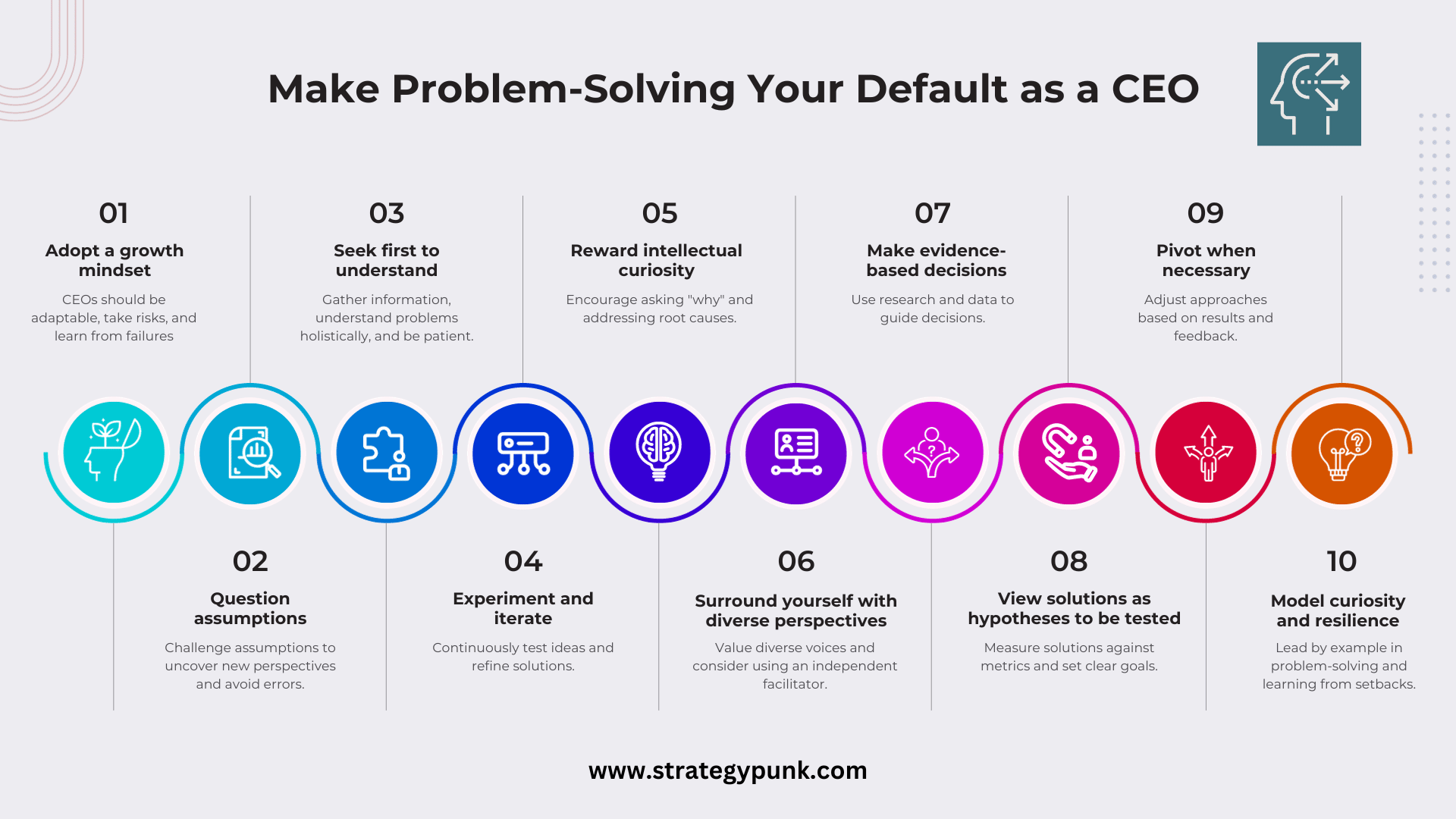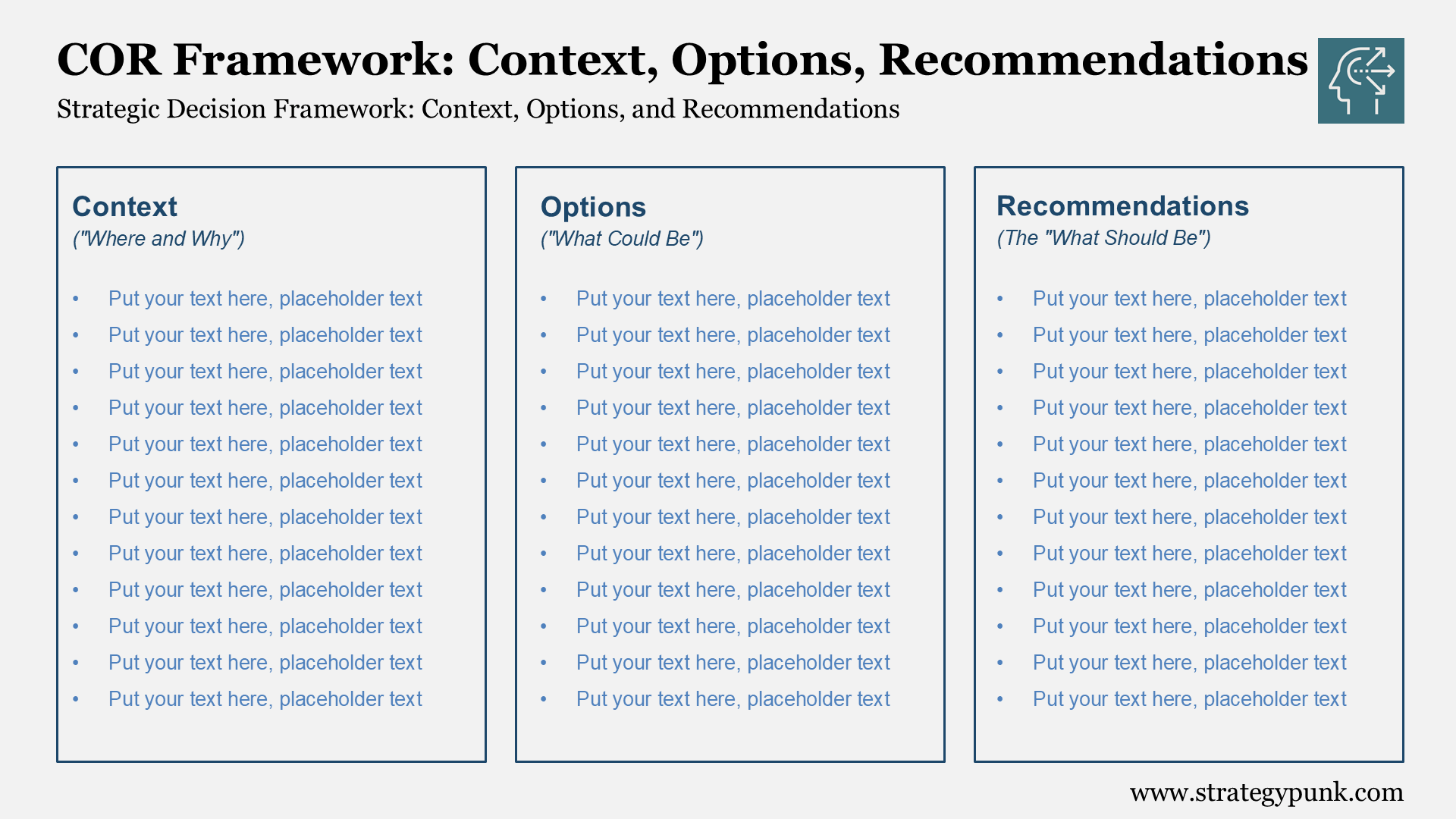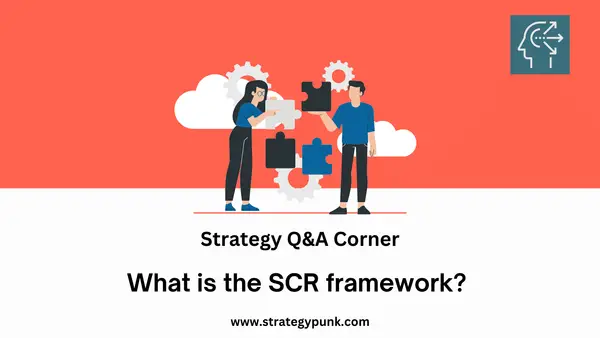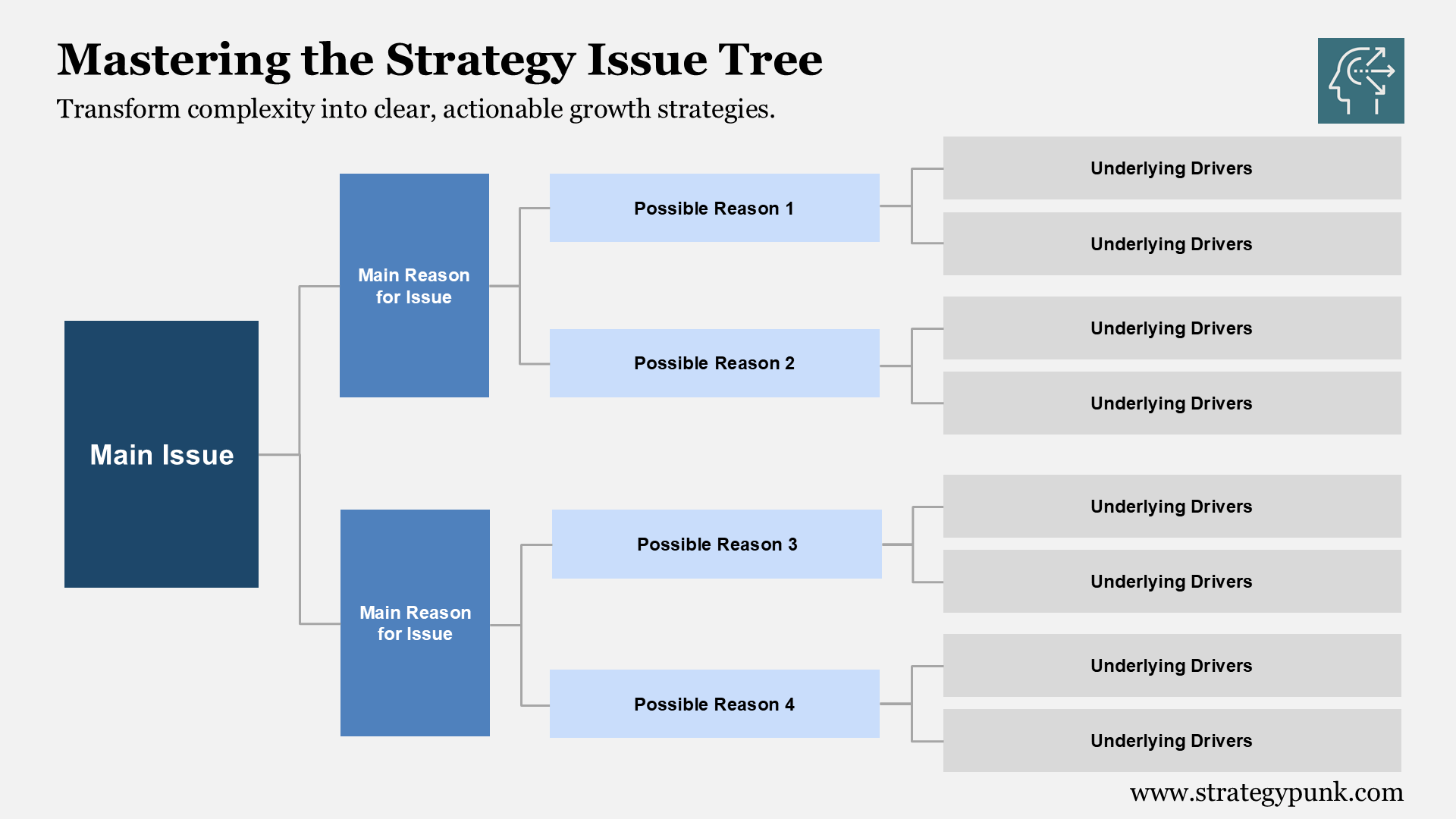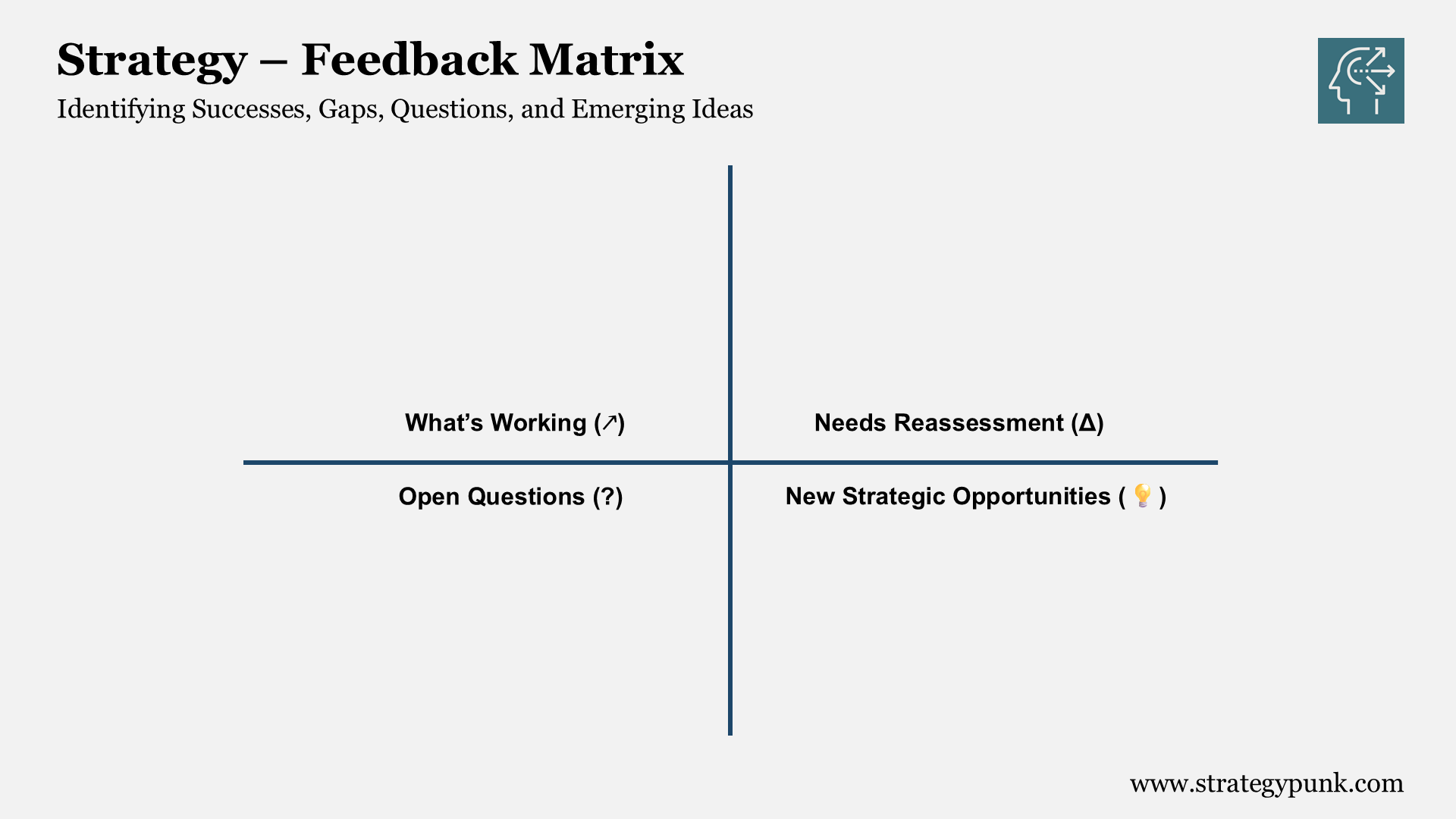Make Problem Solving Your Default as a CEO (Plus FREE PDF Template)
Unlock CEO success with problem-solving strategies. Dive into 10 steps + FREE PDF template to lead innovatively.
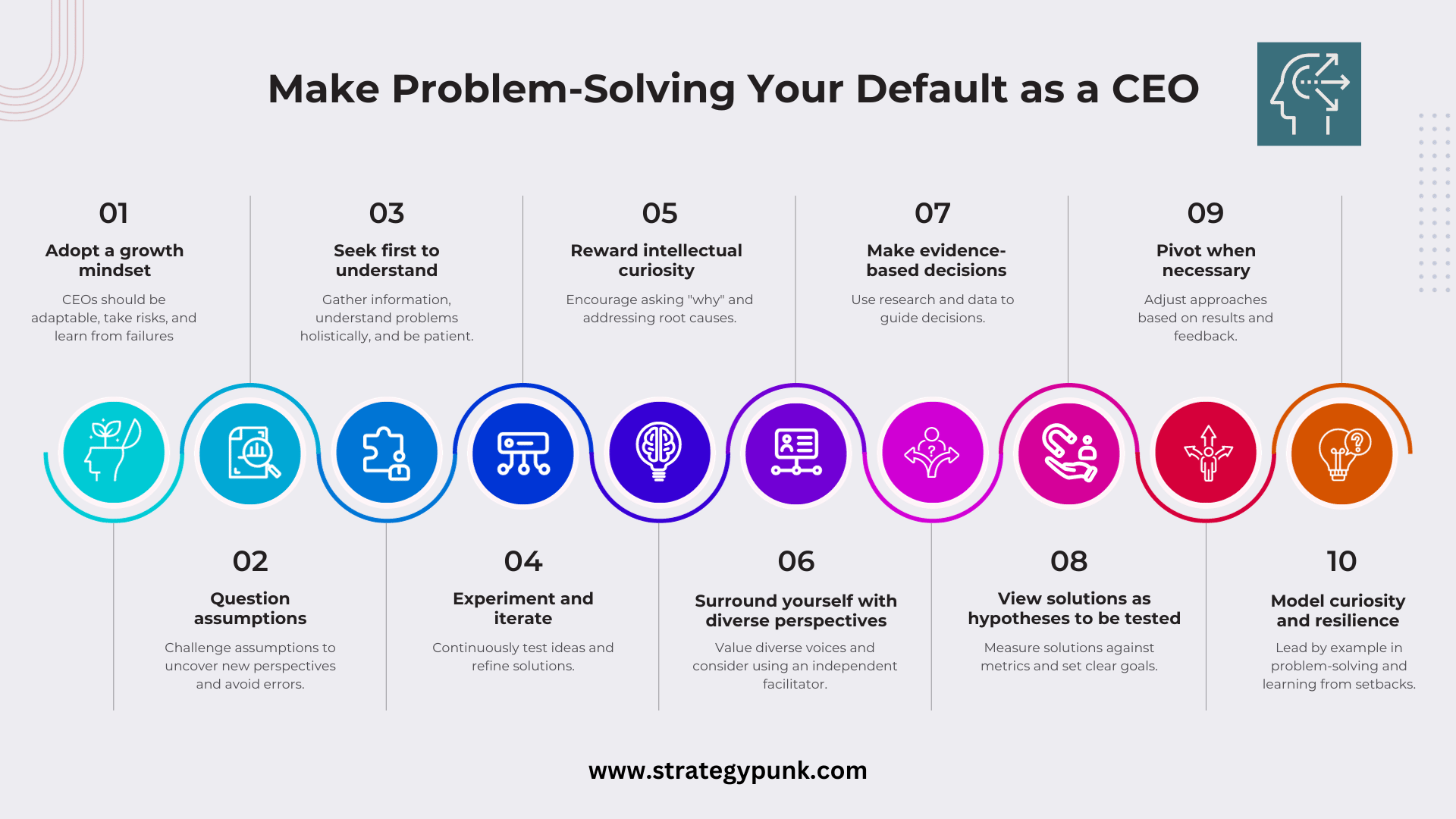
As a CEO, you set the tone and culture for your organization. One of the most valuable skills you can cultivate as a leader is to make problem-solving your default.
Rather than viewing problems as threats, embrace them as opportunities for learning and growth.
Adopting a problem-solving mindset takes practice but will pay enormous dividends for your company's success.
Here are 10 strategies to help you make problem-solving your default:
Adopt a Growth Mindset
Having a "growth mindset" means believing that your abilities and those of your team can be continually developed through effort. View problems as a chance to learn, not something to avoid. Reframe failures as valuable feedback rather than something to beat yourself up over.
Surround yourself with people who challenge you intellectually and bring diverse perspectives. Diversity of thought within your leadership team promotes creative problem-solving. By tapping into different viewpoints, you'll generate better solutions. Model resilience and tenacity for your team.
When you hit obstacles, talk about what you're learning as you work to overcome them. Your mindset is contagious, so exhibit curiosity and determination when facing challenges.
Question Assumptions
As a leader, you need to question assumptions and orthodoxies continuously. Don't automatically accept the status quo as the best way. Ask probing "why" questions to understand root causes rather than treating surface symptoms.
Opposing views can be considered, even if they don't align with your current thinking. Perspectives that differ from your own may provide critical insights. Seek first to understand before rushing to solutions.
Gather data to test your assumptions. Make decisions based on evidence rather than hunches. By challenging assumptions with facts, you often reveal better approaches.
Seek First to Understand
When problems arise, resist the natural urge to jump into solution mode immediately. First, thoroughly understand the situation from all angles. Listen attentively to employee, customer, and stakeholder feedback to determine where issues originate.
Avoid knee-jerk responses. Gather data before reaching conclusions. Make sure your understanding is comprehensive before taking action.
You'll design far better solutions when you start from a foundation of deep understanding.
Experiment and Iterate
View solutions as hypotheses to be tested, not definitive answers. Design small experiments to validate ideas before going all in. This allows you to fail fast and learn quickly.
Embrace an agile, iterative approach to problem-solving. See each solution as a prototype for improvement, not the final product. Refine based on empirical feedback. Don't cling to unworkable solutions.
When the data shows you're heading down the wrong path, dare to pivot. You can continue to refine until you find what works.
Reward Intellectual Curiosity
To foster a robust problem-solving culture, nurture intellectual curiosity and critical thinking across your teams. Reward prudent risk-taking and learning through experimentation.
Demonstrate insatiable curiosity yourself. Model continuous learning and growth for your employees. Invest in developing your team's capabilities through training and job rotations. Hire not just for domain expertise but also for creative thinking skills.
Seek people who ask good questions and view problems in unique ways. Diversity of thought propels innovation.
Surround Yourself with Diverse Perspectives
A CEO benefits significantly from a multifaceted view of the ever-evolving business landscape. Building a team with diverse backgrounds, experiences, and mindsets offers a rich tapestry of ideas and solutions.
Embracing such diversity allows for well-rounded strategies, minimizes blind spots, and ensures that every challenge is approached comprehensively.
Make Evidence-Based Decisions
Informed decision-making is a hallmark of effective leadership. As a CEO, relying on tangible evidence, concrete data, and sound research strengthens the foundation of your decisions and instills trust and confidence among your team and stakeholders.
Moving past instinct and anecdote to ground choices in proven facts ensures optimal outcomes and safeguards against costly missteps.
View Solutions as Hypotheses to be Tested
The journey to the best solution often involves exploration and iteration. CEOs adopt a scientific approach, viewing potential solutions as hypotheses and welcoming testing and validation.
This mindset reduces attachment to a single approach, encourages continuous improvement, and acknowledges that refinement is integral to problem-solving.
Pivot When Necessary
The business environment is dynamic, and adaptability is crucial for long-term success. Recognizing when a strategy isn't yielding desired results and having the courage to pivot ensures sustainability.
As a CEO, the ability to re-evaluate and shift direction based on feedback and results showcases flexibility and a dedication to excellence.
Model Curiosity and Resilience
A CEO’s attitude greatly influences an organization's culture. Demonstrating genuine curiosity fosters a culture of learning and innovation.
Pairing that with resilience ensures that challenges are met with tenacity and perseverance. Embodying these traits inspires your team to approach hurdles as opportunities for growth and learning.
The Takeaway
The best leaders only have some of the answers. They ask the right questions and enable their organizations to test solutions systematically. Making problem-solving your default takes practice but pays dividends. You can approach problems with tenacity and humility.
Seek diverse viewpoints, question assumptions, understand issues fully, design experiments, pivot when necessary, and reward curiosity. By modeling these behaviors as a CEO, you'll develop a competitive advantage for your company.
Your example permits others to adopt a growth mindset focused on continuous improvement through problem-solving. That cultural ethos will drive innovation and success over the long term.
Checklist - 10 Steps to Make Problem-Solving Your Default as a CEO
- Adopt a growth mindset
- Question assumptions
- Seek first to understand
- Experiment and iterate
- Reward intellectual curiosity
- Surround yourself with diverse perspectives
- Make evidence-based decisions
- View solutions as hypotheses to be tested
- Pivot when necessary
- Model curiosity and resilience
10 Steps to Make Problem-Solving Your Default as a CEO: FREE PDF Template
Welcome to this comprehensive guide, tailored for visionary CEOs who aim to make strategic problem-solving an inherent part of their leadership approach.
In the ever-challenging realm of corporate leadership, a proactive and adaptive problem-solving mindset can be the difference between mere survival and marked success.
This template outlines 10 pivotal steps, from adopting a growth mindset to modeling resilience, designed to help you navigate your role's complexities with agility and insight.
Whether leading a budding startup or an established conglomerate, these steps enhance your decision-making prowess and foster a culture of innovation and resilience within your organization.
Please go ahead and dive in and discover how to solidify problem-solving as your executive default.
